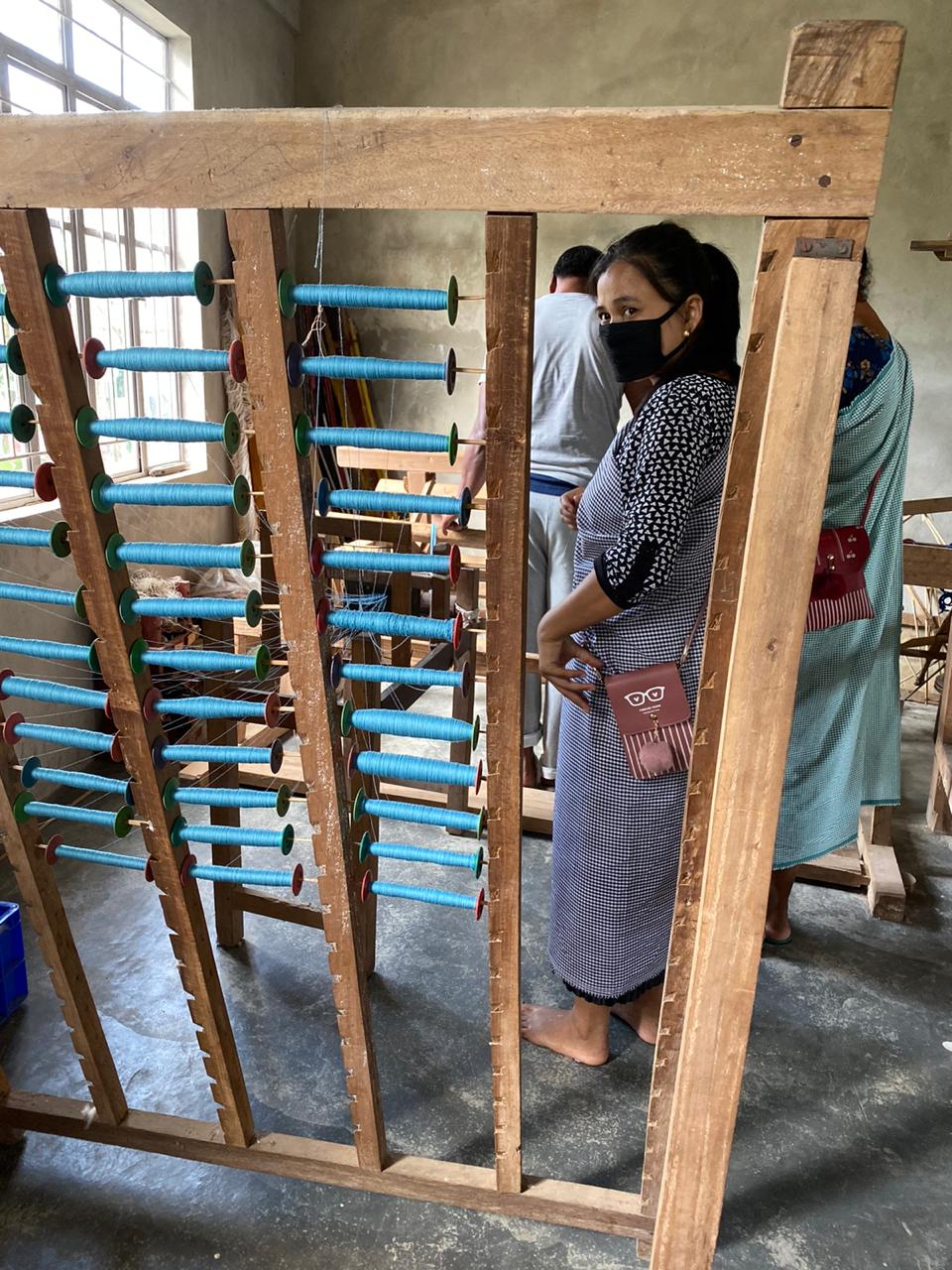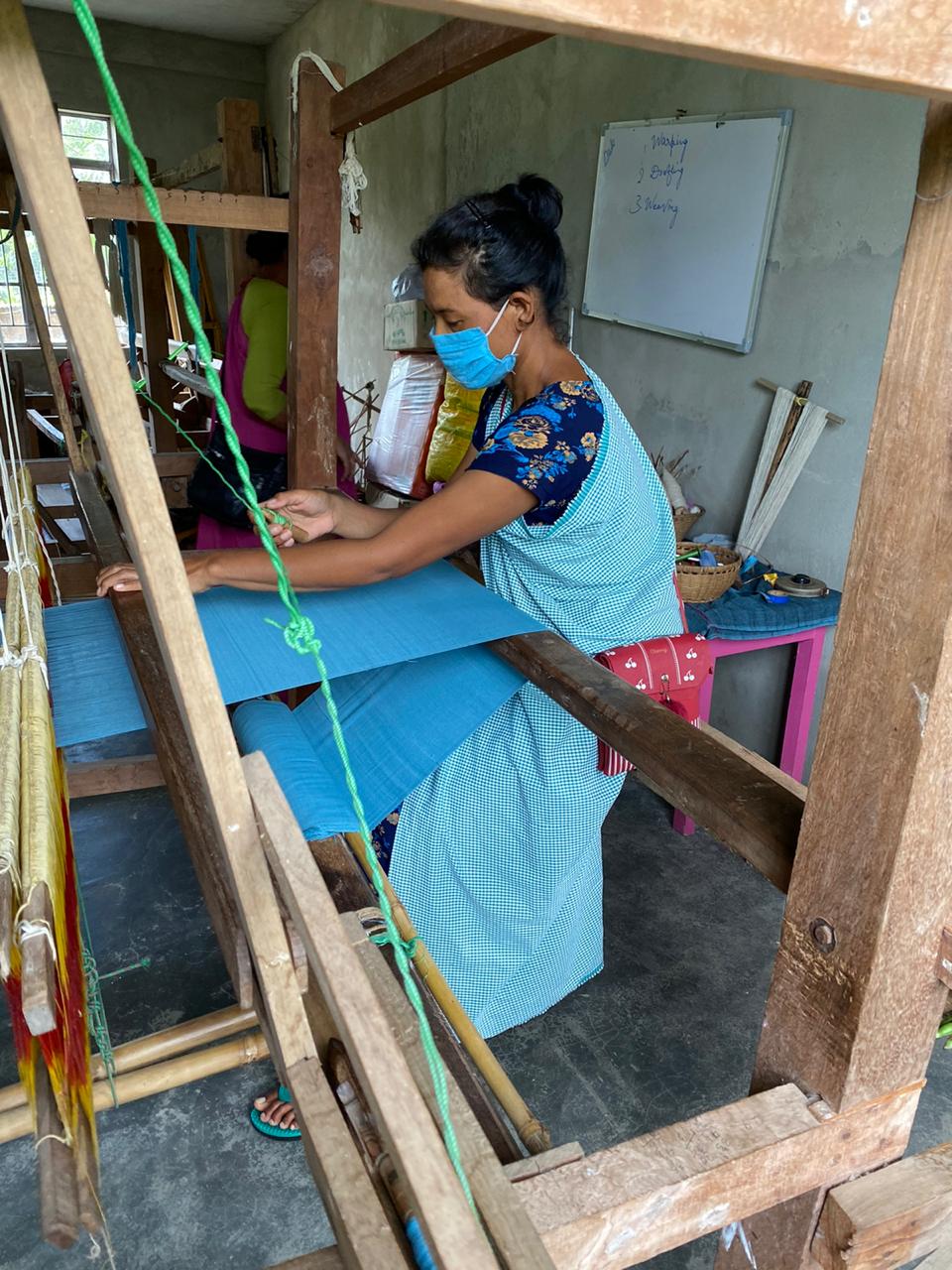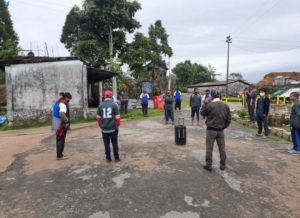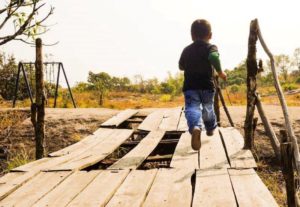The North East Slow Food and Agrobiodiversity (NESFAS) team on December 4, 2020 concluded its three-month Eri Weaves Production training in Khweng, Ri-Bhoi district. Altogether, 12 participants from Madanrtiang community, Ri-Bhoi district took part in the training.
Rikynti Syiem and Lastnokhel Jalong, Eri weavers and proprietors of M/S Rikynti Training Centre in Ri-Bhoi, who were the resource persons involved in the training taught the participants how to rear silk worms, spinning of the Eri silk, dying and weaving of the end products.
Silkworm rearing: Rikynti Syiem explained about the life cycle of an Eri silkworm which takes 28 days approximately for the moth to develop, right from the eggs to the larvae, the pupa (which is encased in the cocoon) and finally, to the adult or the moth. She also shared about the type of leaf used for feeding the silkworm, which is the castor leaf. The preparation of the cocoon before spinning was taught. Rikynti explained how to select the cocoon and how to distinguish the bad ones from the good. After selecting the cocoons, they are then washed with dish soap and cooked in a pot for two hours. They are then rinsed and dried in the sun for two hours.

Spinning: Several practical classes on spinning were also conducted during the training. The cocoons were spun into yarn using the spinning device called the “Takli” or the “Takri”. The yarn was wound around a device called the “Khwah” and is then ready for dyeing.

Dyeing: On the other hand, Jalong explained about the art of dyeing using natural dye materials like turmeric (yellow), onionskin (green), lac (red), etc. Iron ore which is used for obtaining the black colour is substituted with rusted iron nails (which are soaked in water overnight) since iron ore is mostly unavailable. The mordants, which are mostly used, are sla sohkhu and diengrnong.
Weaving: Several theory and practical classes were conducted throughout the three-month training period on weaving. The processes involved in it are the bobbin winding which is an integral part of weft preparation in weaving, to the warping which is a process that converts the yarn into a linear form to give the length on the loom. Warping is done on a device called the warp drum and the width and desired quality of the product is decided at this stage, the drafting which is a process of drawing the warp yarn through the eye of heald frames, denting which is the process of inserting warp yarn through red and then the weaving which is the process of interlacing the warp and the weft to form the fabric.

NESFAS field coordinator in-charge of Eri Weaves Aurilia Tariang said, “The training programme is an opportunity for the people to showcase their skills and their undiscovered talent. At the same time, it withholds and preserves tradition as well. With this training programme I hope that the people will benefit a great deal and improve their livelihood”



